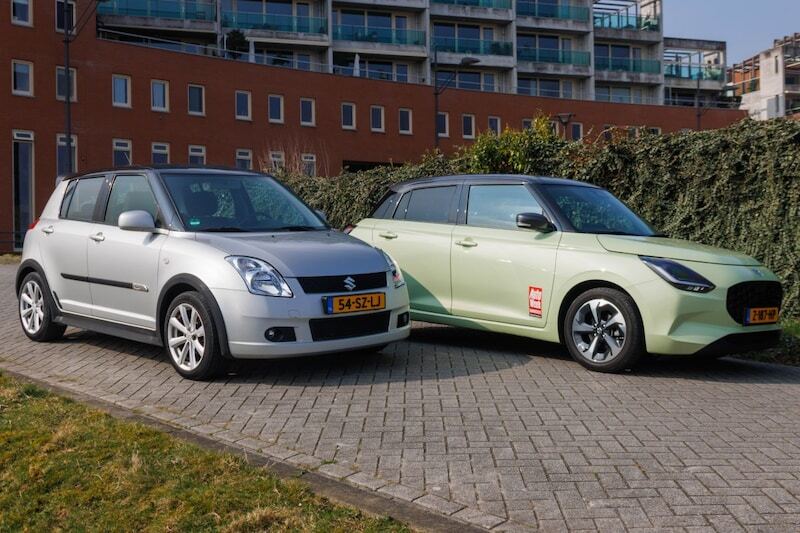
The Suzuki Swift has been an affordable and reliable B-segment car for years. Several generations have come and gone, but the 2005 model had perhaps the greatest impact. The latest Swift still shares many similarities with its predecessor.
To understand the design of the current Suzuki Swift, we need to go back twenty years. Without the model that saw the light of day in 2005, the Swift would probably have looked very different in 2025. A little history; the production of the second-generation Swift ended in 2003. Its design dated back to the 1980s, and despite several facelifts, the model was quite outdated after the turn of the century. Surprisingly, there was no immediate successor. However, the so-called Concept-S served as a kind of harbinger in September 2002.
Third Swift did things completely differently
With the third generation Swift, Suzuki took a completely different tack, and the somewhat sedate image was gone. Reportedly, the car also had to better meet the wishes of Europeans. The new Swift was therefore partly developed in Europe and eventually shown to the public at the 2004 Paris Motor Show. For Suzuki, the design was innovative, although some inspiration was probably taken from other models on our continent. For example, the third generation of the Swift, with the wheels on the corners and the relatively short nose, certainly has something of the New Mini.
Over the years, Suzuki has further developed the successful design, but the changes have never been as shocking as in 2005. The sixth generation of the Swift even shows some similarities, although there are also many differences. Completely in line with the latest trend, more hard folds and lines have been applied to the body. Furthermore, modern technology can be seen on the outside, such as the sharply drawn LED lights all around.
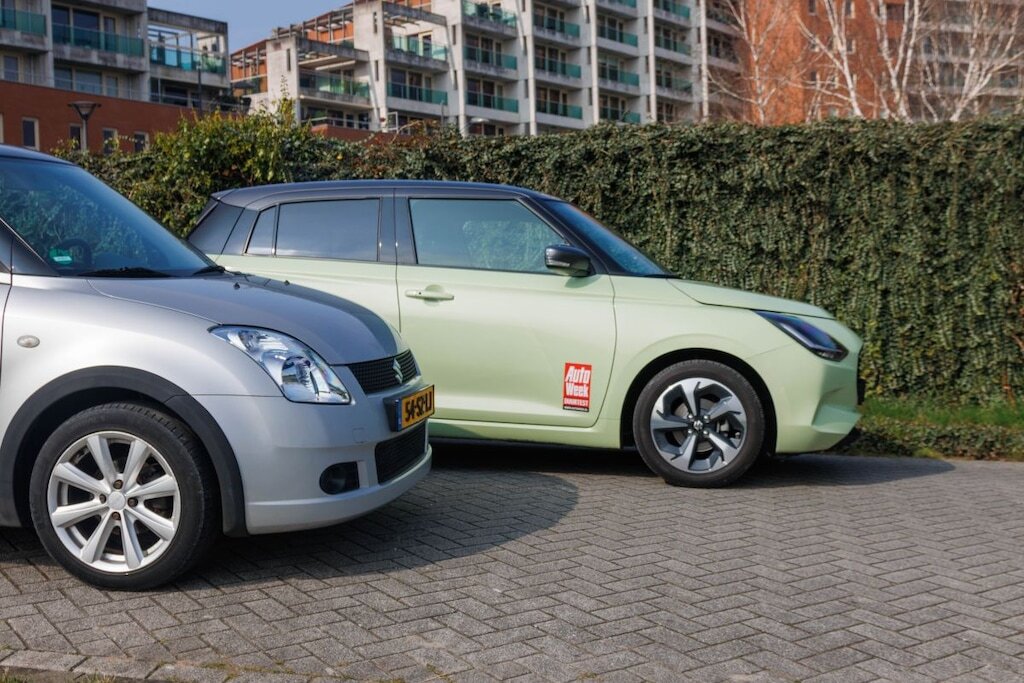
Now a ‘clamshell’ hood
The most striking change, however, is in the nose; a so-called ‘clamshell’ hood has been chosen. In the old Swift, the hood is ‘simply’ part of the rest of the nose, while in the current generation, the bumper, the grille, the front fenders, and the headlights are lower.
New cars bigger? Current Swift actually got smaller!
Then a look at the external dimensions. New cars are getting bigger and bigger, although that doesn’t quite apply to the Swift. The new Swift is about 16.5 centimeters longer and 4.5 centimeters wider than the old one, but the height remained virtually the same. The alloy wheels in the photos are all 16 inches, which was certainly not a standard size about twenty years ago. However, the gray Swift is equipped with the sporty GT Plus package, which includes these Italian Toora wheels. For €1,999, this included a spoiler, side skirts, wider wheel arch trims, and a honeycomb grille at the time.
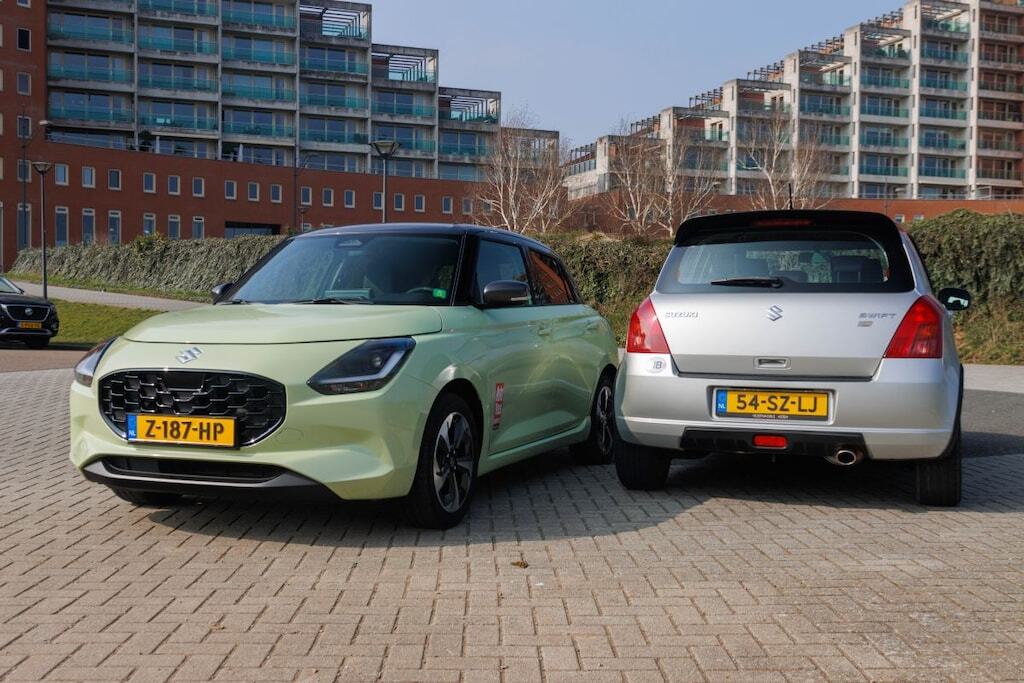
Twenty-year-old Swift interior still reasonably good
After twenty years, the interior of the third-generation Swift is quite dated. The collection of gray tones gives a rather dull and businesslike impression. You should not expect miracles from the seats and the materials used either. Yet, after all these years, you can still reasonably show up with it, provided you don’t set too high standards. Especially with this Shogun version, you have little to complain about, because the Swift in the photos is equipped with air conditioning, power windows, and a height-adjustable driver’s seat, for example. A salient detail about this version: for the European market, the Swift was mainly rolled off the production line in Hungary between 2005 and 2010, but the 1.3 Shogun came from the factory in Japan at the time.
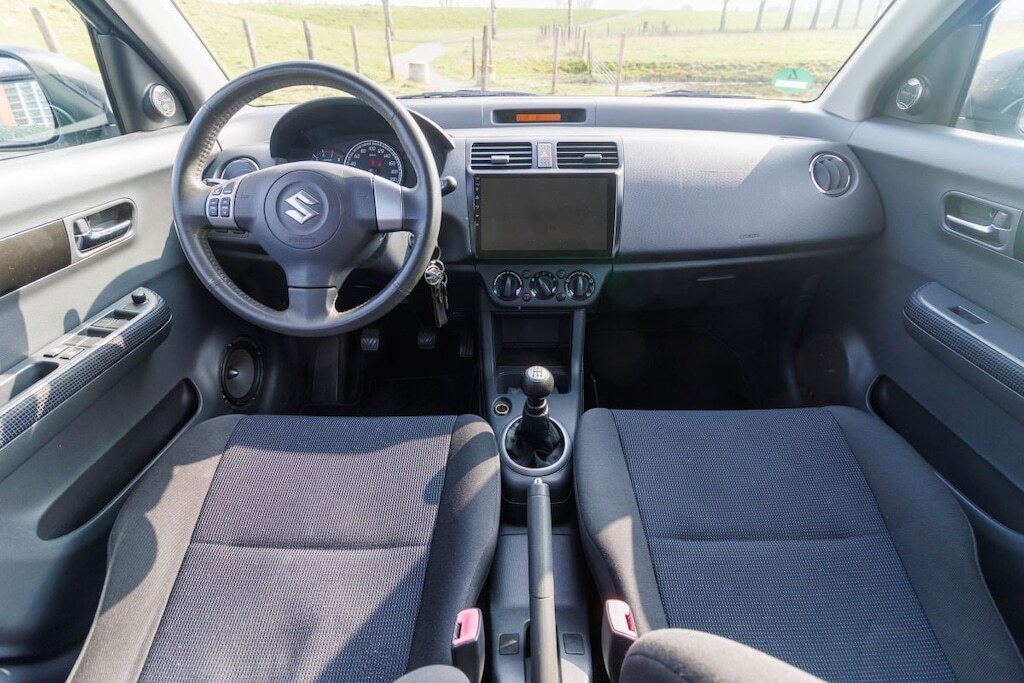
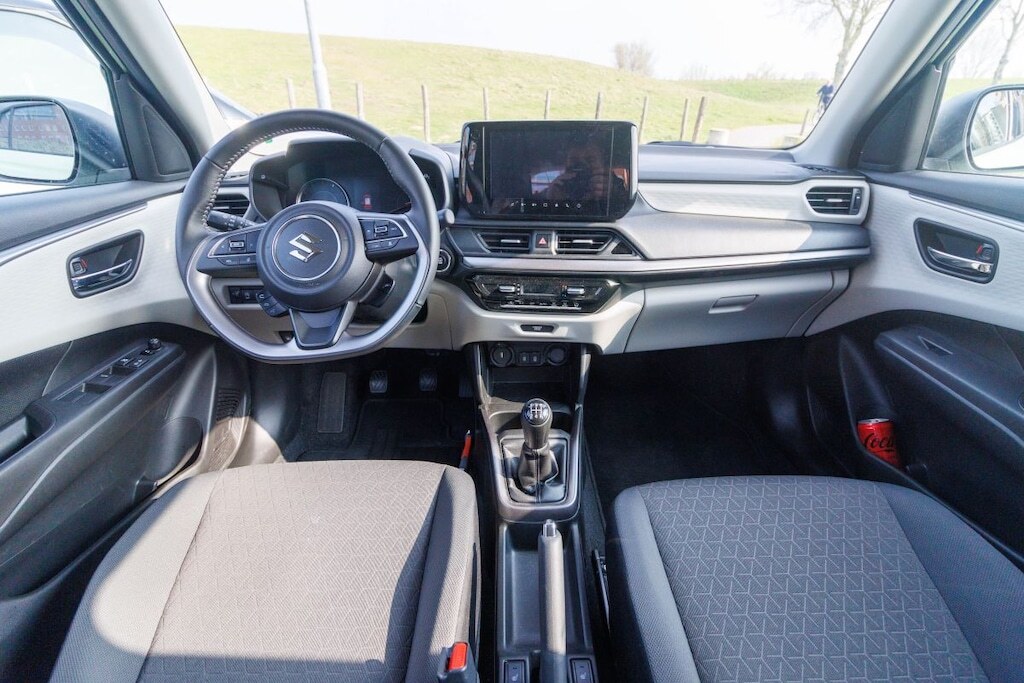
The interior of the new Swift has become a bit more stylish. For example, the dashboard and door panels have a more playful design and are finished in two contrasting colors. As for the quality of the materials, Suzuki has made significant steps, although the hard plastics are still nothing to write home about. The Swift does its best to keep up with the times, so a 9-inch multimedia system is standard at the top of the dashboard. Many physical buttons and, for example, the analog gauges have been retained.
Swift remains cramped in the back
The entry-level model of the new Swift comes standard with air conditioning, power windows, and a list of safety systems. This yellow-gray Style version also comes with polished 16-inch alloy wheels and a slightly better-dressed interior. Compared to the old Swift, the wheelbase of the new generation grew by 7 centimeters, and the luggage space increased by 52 liters.
Even with this extra interior space, it remains a struggle for adults in the back seat; you are significantly better off in the front seats in both models. Suzuki also seems to stick to the familiar concept in the interior, despite a number of unavoidable innovations. As a result, it remains a relatively simple and sometimes tinny car inside. As an occupant, you are reminded of this by the water that clatters hard on the roof when you drive through the car wash, or during a heavy rain shower.
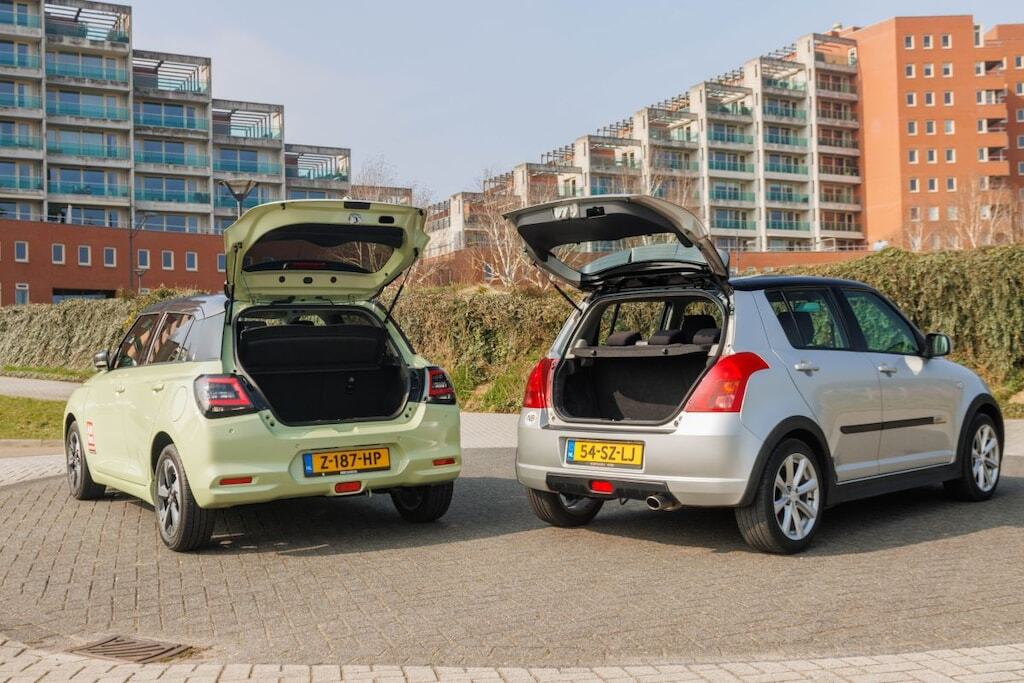
Driving is still fun
With the introduction of the third generation, the Swift took a big step forward in terms of driving characteristics. Twenty years later, it is still a nice driving car that effortlessly ‘clicks’ from one gear to another. The 1.3-liter four-cylinder gasoline engine with 92 hp and 116 Nm is quite peppy, provided you keep it revving a bit. The chassis is not the most refined, but in the B-segment, it was nothing to be ashamed of at the time.
As for driving, the new Swift shares many similarities with its predecessor, although there are now, of course, many modern bells and whistles on board. Suzuki unfortunately only offers one powertrain these days, a mild-hybrid 1.2-liter three-cylinder gasoline engine with 83 hp and 112 Nm. With the old Swift, in addition to the aforementioned 1.3, you also had a choice of a 1.5 and a 1.6, although the latter power source was reserved for the Sport version. There was also a diesel engine on the price list, which was a first for this model at the time.
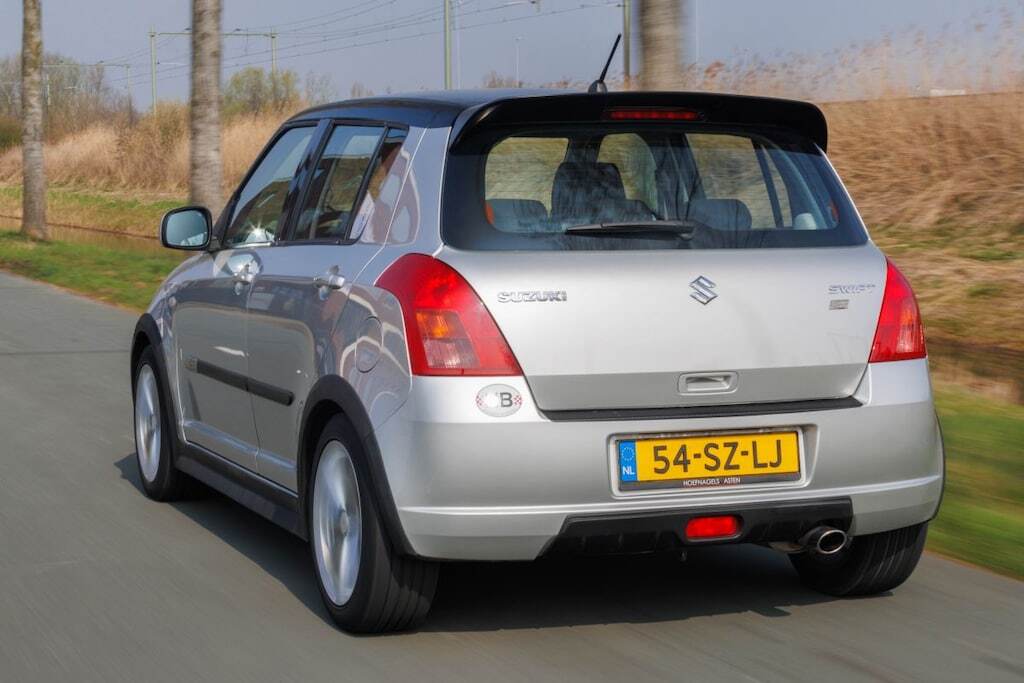
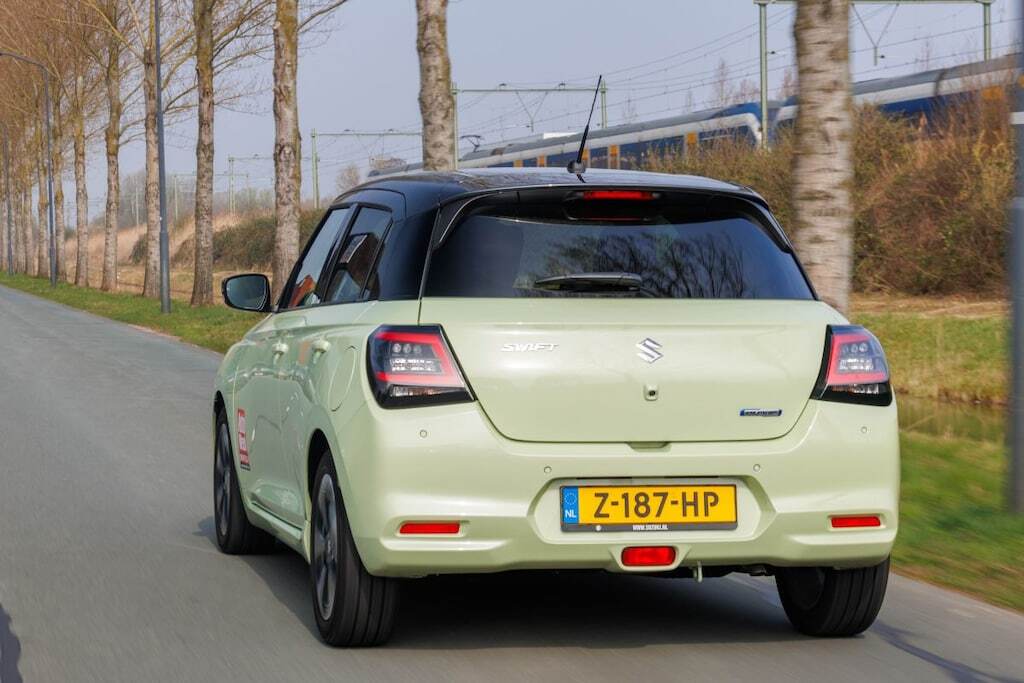
It is striking that the latest Swift is still available with a manual gearbox, while even in this segment, many new cars only have an automatic transmission due to the advancing electrification. Also remaining is the playful character, which the Swift owes in large part to the relatively low curb weight. It is often grumbled that new cars suffer from obesity, but this is certainly not the case with this compact Suzuki. Despite the extra technology on board, the new Swift is lighter than its predecessor, 919 kg versus 965 kg.
Often at the pump due to small tank, old one has 45 liters
A lower weight also has a positive effect on fixed costs and fuel consumption. Speaking of fuel, there is something else to note. With the new Swift, which has been used as an AutoWeek endurance tester in recent months, you feel like you are relatively often at the pump. This may have to do with the fuel light coming on relatively early, although the modest tank capacity of about 37 liters probably also plays a role. The old Swift scores better in that regard, with 45 liters of gasoline going into the fuel tank.
There is another annoyance while driving, which you will encounter in both the old and the new Swift. The roof extends far forward, and the windshield is quite upright, so you sometimes have to lean far forward at the traffic light to see if the light is already green. Just like in a Mini… We can conclude that the Swift is not perfect, but the model has certainly remained true to itself in all those years.